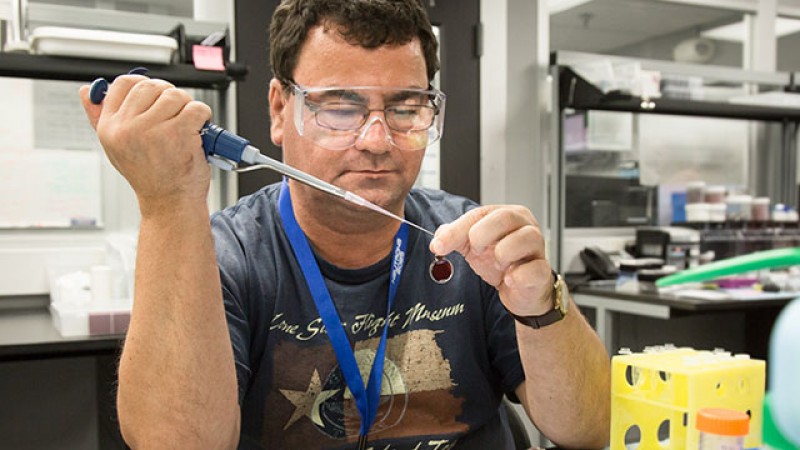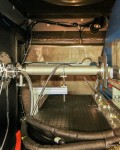Photosynthesis, the process plants use to make food, begins by harvesting solar energy. A team of researchers from the University of Glasgow and Oak Ridge National Laboratory are investigating what can be learned from nature about how to replicate this process. The team is studying the structure of some pigment-protein complexes that act as light-harvesters in photosynthetic bacteria. They believe that a full understanding of how these light-harvesters, called LH2 complexes, work will enable them to design robust analogues for use in artificial systems designed to capture solar energy to make clean, renewable fuels.
Specifically, they are investigating LH2 complexes from a range of photosynthetic bacteria using small angle neutron scattering at the EQ-SANS instrument, Spallation Neutron Source beam line 6.
“The more we understand how they harvest the light, the more we can find ways to apply their properties,” said Alastair Gardiner from the University of Glasgow.
The LH2 complexes are donut or ring-shaped and the constituent proteins act like scaffolds that hold the light-absorbing pigments in an extended antennae array. This unique arrangement is intriguing to the team because the organization of the complex in the membrane determines its light-absorbing properties and energy transfer efficiency. Using neutron scattering, the team is able to help determine the ring size and shape, providing key information on how their 3-D structures relate to their light harvesting efficiency.
Dr. Gardiner was accompanied for this experiment by Dr. Aleksander Roszak and the team is headed up by Richard Cogdell from the University of Glasgow, who partners with the Photosynthetic Antennae Research Center (PARC), a DOE Energy Frontier Research Center.




